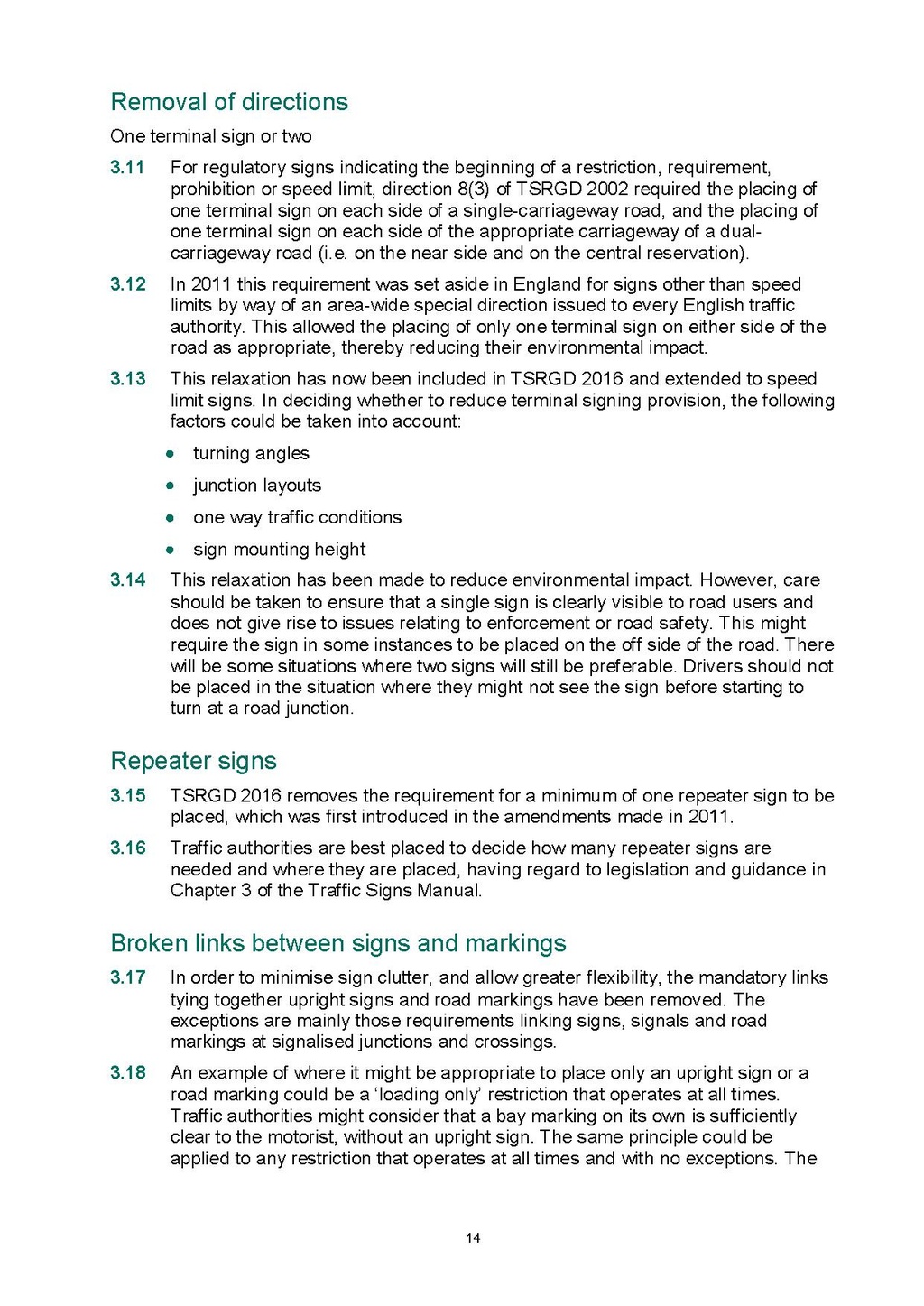This page has been validated.
Removal of directions
One terminal sign or two
3.11
For regulatory signs indicating the beginning of a restriction, requirement, prohibition or speed limit, direction 8(3) of TSRGD 2002 required the placing of one terminal sign on each side of a single-carriageway road, and the placing of one terminal sign on each side of the appropriate carriageway of a dual-carriageway road (i.e. on the near side and on the central reservation).
3.12
In 2011 this requirement was set aside in England for signs other than speed limits by way of an area-wide special direction issued to every English traffic authority. This allowed the placing of only one terminal sign on either side of the road as appropriate, thereby reducing their environmental impact.
3.13
This relaxation has now been included in TSRGD 2016 and extended to speed limit signs. In deciding whether to reduce terminal signing provision, the following factors could be taken into account:
- turning angles
- junction layouts
- one way traffic conditions
- sign mounting height
3.14
This relaxation has been made to reduce environmental impact. However, care should be taken to ensure that a single sign is clearly visible to road users and does not give rise to issues relating to enforcement or road safety. This might require the sign in some instances to be placed on the off side of the road. There will be some situations where two signs will still be preferable. Drivers should not be placed in the situation where they might not see the sign before starting to turn at a road junction.
Repeater signs
3.15
TSRGD 2016 removes the requirement for a minimum of one repeater sign to be placed, which was first introduced in the amendments made in 2011.
3.16
Traffic authorities are best placed to decide how many repeater signs are needed and where they are placed, having regard to legislation and guidance in Chapter 3 of the Traffic Signs Manual.
Broken links between signs and markings
3.17
In order to minimise sign clutter, and allow greater flexibility, the mandatory links tying together upright signs and road markings have been removed. The exceptions are mainly those requirements linking signs, signals and road markings at signalised junctions and crossings.
3.18
An example of where it might be appropriate to place only an upright sign or a road marking could be a 'loading only' restriction that operates at all times. Traffic authorities might consider that a bay marking on its own is sufficiently clear to the motorist, without an upright sign. The same principle could be applied to any restriction that operates at all times and with no exceptions. The
14
